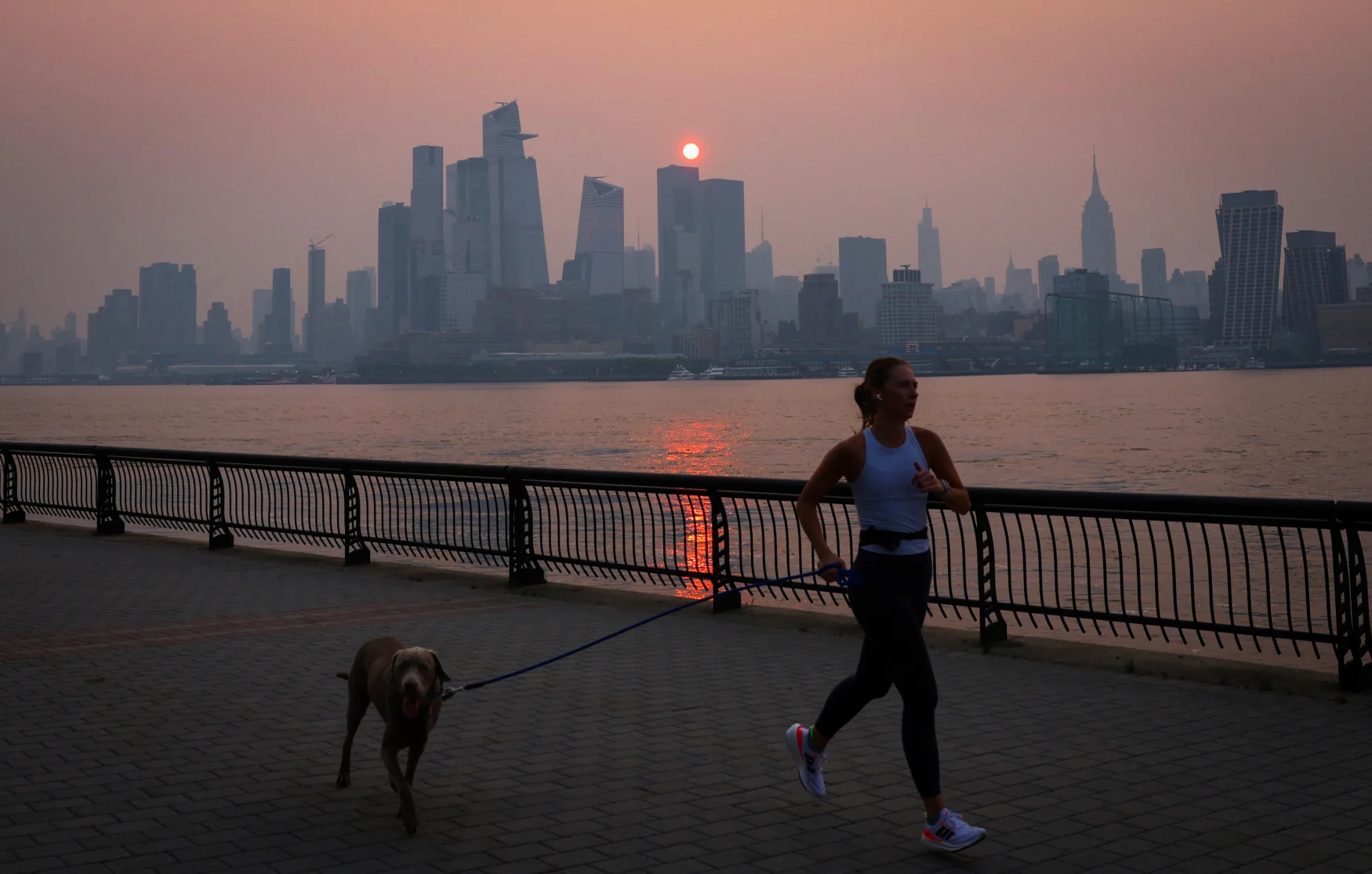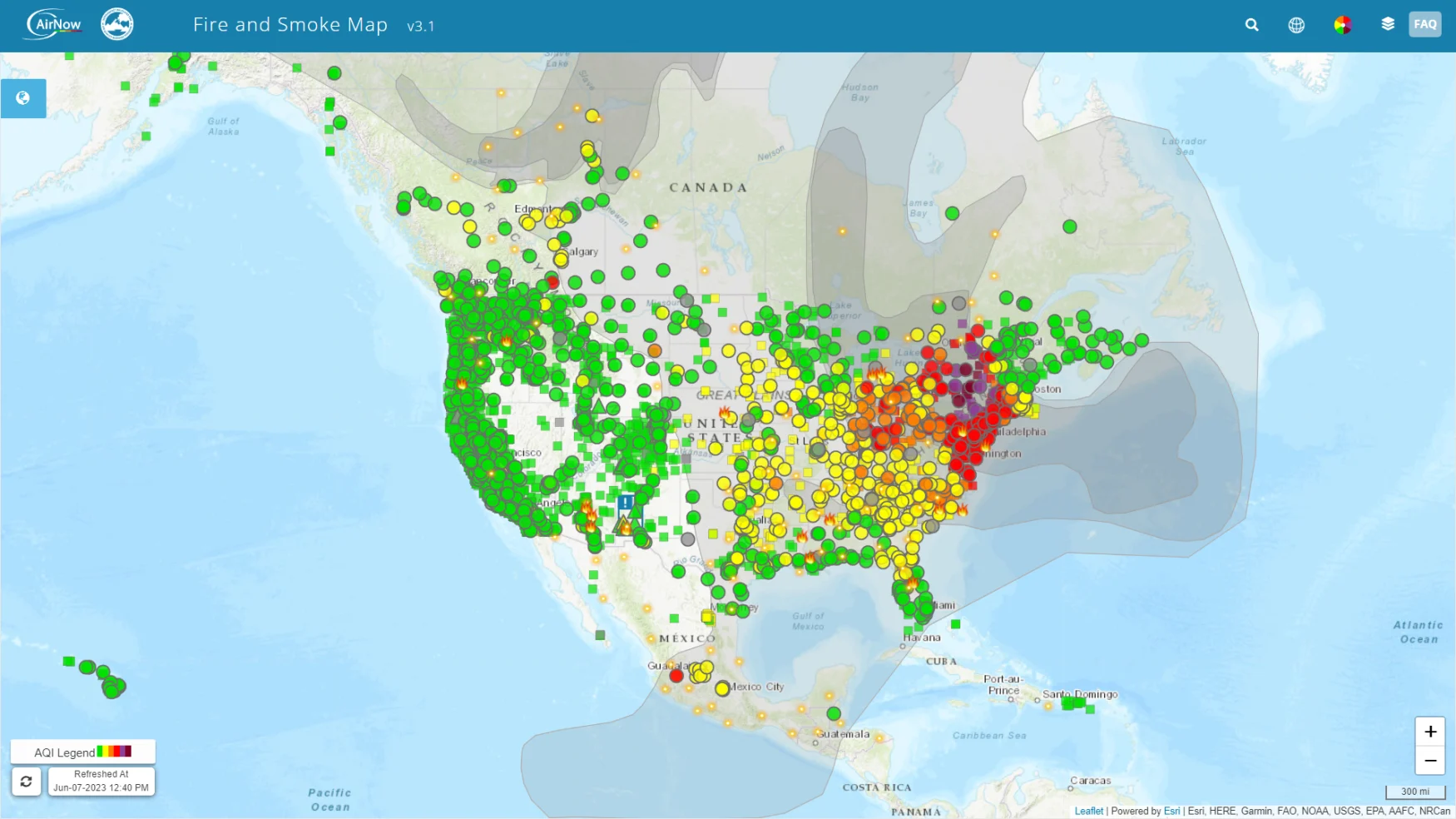How to understand the Air Quality Index
Air quality levels in parts of Canada and the US have nosedived in recent days as winds have carried smoke from wildfires in Quebec and Nova Scotia across the continent. Things are bad enough that New York City was deemed to have the worst air quality of any major city in the world.
Several states and cities have issued advisories urging people to stay inside if possible to avoid the dangers of unhealthy air quality. Jurisdictions are typically basing their decisions on the Environmental Protection Agency’s Air Quality Index (AQI). Metro areas with a population of more than 350,000 have to report air quality data on a daily basis, while other locales simply do so as a public service.
The AQI measures air quality based on five major pollutants that the Clean Air Act regulates: ozone, particle pollution (AKA particulate matter or PM2.5), carbon monoxide, nitrogen dioxide and sulfur dioxide. The EPA also typically issues AQI forecasts for the next day each afternoon. With smoke pollution from wildfires, particulate matter is the primary air quality concern.
The EPA likens the AQI to a weather forecast that can help you plan outdoor activities. There are a couple things to keep in mind, however. For one thing, the AQI isn’t fully transparent on which pollutant is the biggest contributing factor to its values at a given time. The EPA uses a formula to calculate AQI values — it doesn’t simply add up the impact of each pollutant.

Subscribe to the Engadget Deals Newsletter
Great deals on consumer electronics delivered straight to your inbox, curated by Engadget’s editorial team. See latest

Please enter a valid email address
Please select a newsletter
By subscribing, you are agreeing to Engadget’s Terms and Privacy Policy.
The AQI uses a scale that typically ranges from zero to 500 to denote air quality. If your area has an AQI of 50 or below, you’re in a green zone. You should have good air quality and little or no risk from pollution.
When the index reaches a value of between 51 and 100, that’s a code yellow, which is moderate cause for concern. The EPA says that in this range, air quality is acceptable, but there may be a health risk for some people, such as folks who are “unusually sensitive to air pollution.”
When the index is between 101 and 150, that’s when the air quality may start to impact “members of sensitive groups.” These include people with heart or lung disease, older adults, children, pregnant people and those who spend a great deal of time outdoors. However, the general public is less likely to be affected in orange zones, the EPA says.

The AQI will reach a code red when the index value surpasses 151. “Some members of the general public may experience health effects; members of sensitive groups may experience more serious health effects,” according to the EPA.
Between 201 to 300, the AQI is at code purple. This denotes a health alert, the agency says. There’s an increased risk of negative health effects for everyone. Once the index reaches 301, the AQI will be at a code maroon. That means the air quality is hazardous and constitutes a “health warning of emergency conditions” as everyone is more likely to be affected.
At code orange, the EPA recommends that everyone keeps outdoor activities light and short and for sensitive groups to go inside if they’re experiencing symptoms. In red zones, everyone is encouraged to stay indoors if they have symptoms, while sensitive groups might consider moving all activities indoors.
When the AQI reaches code purple, sensitive groups are advised to avoid all outdoor physical activity, and others should limit outdoor activities. In maroon areas, everyone should stay inside. It’s possible for PM2.5 levels to go above an AQI value of 500, in which case you should take extra precautions and steps to protect yourself.
Fine particles from smoke can cause issues such as burning eyes, runny noses and conditions like bronchitis, according to the EPA. The particles may aggravate chronic heart and lung diseases too. The agency says those who are advised to stay indoors due to smoke pollution should try to keep the air as clean as possible inside. It suggests avoiding using anything that burns (such as gas stoves, wood fireplaces and candles) or vacuuming, since this can stir up particles that are already inside your residence.
If you have an air conditioner, you should run it with the air intake closed and the filter clean, the EPA says. Those who absolutely have to go outdoors might find it helpful to wear a mask that can help filter out particulate matter.
An interactive map shows AQI levels across the US, Canada and parts of Central America. At the time of writing, some areas of New York, Pennsylvania and Ontario are at a code maroon and have hazardous air quality, according to the EPA. Many other regions are under red and purple alerts.

